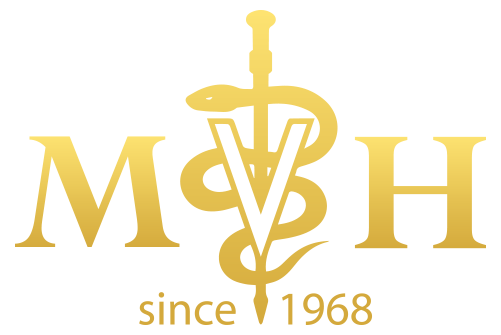Nutrition plays a critical role in your pet’s health. However, knowing what to feed your pet can be a bit challenging. At Minnesota Veterinary Hospital, we understand that there are many different types of food to choose from and are here to help you navigate important decisions about your pet’s health. Our goal is to ensure your pet’s food is safe and nutritious.
Here’s what you need to know about pet food safety and selecting a healthy diet.
Types of Pet Food Diets to Avoid
When it comes to pet food, your pet’s health and safety should always be a top priority. Here are a few pet food diets you should be aware of and try to avoid.
- Raw Food Diets
Unfortunately, raw meat can contain harmful bacteria such as Salmonella and E. Coli. Not only can this cause digestive upset for your pet, but it can also put you and your family at increased risk of food-borne illness. Because of this, the AVMA and CDC discourage feeding raw food diets to your pet.
- Grain Free Diets
In recent years, grain-free diet formulations have become a popular fad among pet food companies and pet owners. However, recent reports have raised concerns about the connection between grain-free diets and a dangerous heart condition known as dilated cardiomyopathy (DCM). The primary diets of concern contain legumes such as peas and lentils as the primary ingredient.
The FDA is currently conducting an investigation to learn more about the connection between grain-free diets and DCM. In the meantime, we recommend avoiding grain-free diets and other diets that contain high concentrations of legumes. For more information about the FDA’s investigation, as well as a list of reported pet foods, you can check out the FDA’s questions and answer page found here.
- Homemade Diets
Homemade diets are popular for pet owners who want to know exactly what is going into their pet’s food. While homemade diets can be helpful for pets with certain medical conditions, there are some critical things you should know before making your pet’s food at home.
Pets require a delicate balance of essential vitamins and nutrients. Achieving this balance can be tricky, and imbalances can cause serious health problems. If you are considering an at-home diet for your pet, we recommend setting up an appointment to discuss your pet’s diet plan or working with a veterinary nutritionist. Veterinary guidance is important to ensure your pet receives a proper balance of nutrients to support their long-term health.
Additional Pet Food Safety Tips
Another critical factor when it comes to pet food safety is how the food is handled. Kibble should be stored in an air-tight container and a temperature-controlled environment. If your pet’s food comes frozen or requires refrigeration, pay close attention to any handling or storage instructions provided. This is essential for reducing the risk of food-borne illness and keeping your furry friend happy and healthy.
Final Thoughts
When selecting a pet food diet, it’s critical to understand pet food safety and your pet’s nutritional needs. Certain diets can have severe consequences for your pet’s health, and it’s essential that your pet’s food is handled appropriately.
We hope this article has provided some additional insight into pet food safety and will serve as a helpful guide when selecting an appropriate diet for your pet. If you have additional questions about pet food safety or would like to schedule an appointment, please give us a call at 651-484-3331.
